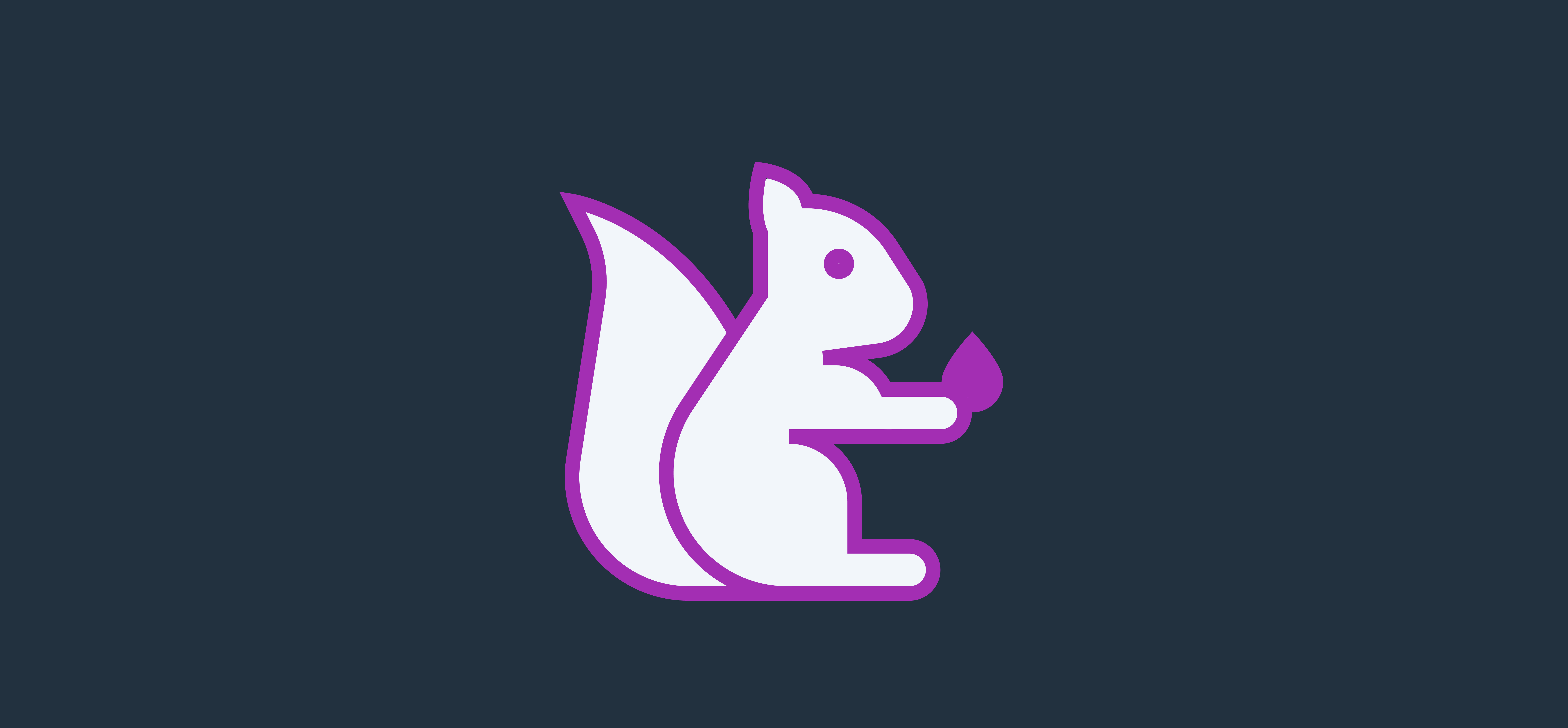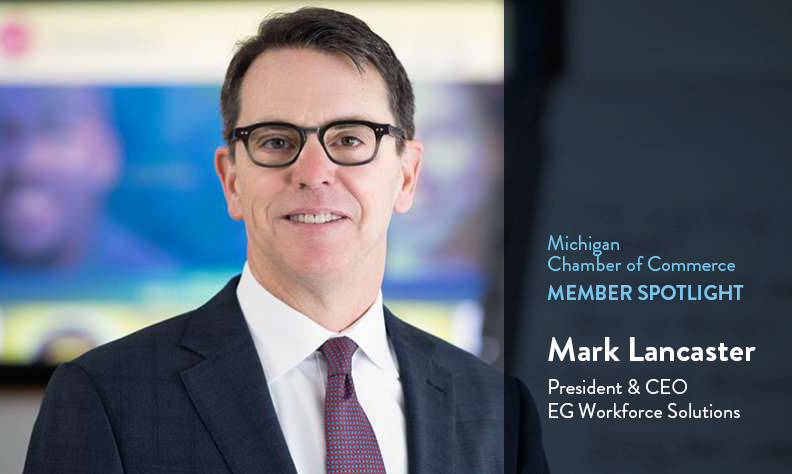RPO, or Recruitment Process Outsourcing is a system where an employer transfers all or part of its recruitment processes to an external service provider. An RPO provider can provide its own or may assume the company’s staff, technology, methodologies, and reporting. When managed well with a quality provider, RPO can reduce time to hire by 40 percent and deliver cost savings of more than 50 percent.
When it comes to hiring beyond one-off positions, the task can seem daunting to employers. Where do you find the best talent? How do you attract that talent? How much is it going to cost to recruit on a mass scale? This is where an RPO service makes sense.
EG Workforce has established an RPO service to better service our clients, clients like one of the leading food retailers in the Midwest. Implementing EG’s RPO service, greatly impacted their bottom line and have used us to expand the service as they continue growing in other areas of the midwest.
To put it simply; EG Workforce helps bridge the gap between businesses and people by offering custom recruitment solutions designed for employers who need help hiring teams of great people, consistently, efficiently and quickly.
RPO Models – Beyond Business Process Outsourcing (BPO)
With BPO, an organization outsources the management of an internal business function to a third party expert, such as EG Workforce to drive cost, quality, efficiency, service, and scalability benefits. The third party is responsible for hiring the people and is also responsible for their ongoing performance and output. The main difference between BPO and RPO is responsible for hiring people into the company, but does not directly manage the performance of the employees they place. There are also multiple RPO models an organization can implement based on their needs.
End-to-End. This solution is used for a single market, country, region, or across the globe. It is also the most popular type of RPO service – like what EG Workforce Solutions offers. Likewise, the RPO solution may focus on a specific business division, role family (e.g. retail), or enveloping all hiring across the company.
Project RPO. This solution allows an organization to hire a team of experienced talent acquisition recruiters to quickly fill a specific need within a specific time frame. This includes projects such as recruitment back-logs, launching a new hourly team, meeting an unplanned or unexpected hiring boom, or talent sourcing.
On-demand. This solution is like Project RPO, but instead involves having one or a few outsourced recruiters join your talent acquisition team for a specific project or time period.
Lastly, your company can also leverage an outsourced provider to build your contingent workforce, like EG Workforce Solutions, ensuring you have access to a high-value talent pool whenever needed.
Why RPO Makes Good Business Sense
Reducing turnover is a top priority for most employers, but in the hourly workforce of large retail organizations, the impact of losing talent can have a devastating effect. The Midwest retailer that EG serviced was experiencing a high level of turnover in the ten stores that made up their Kentucky and Ohio market. The Center for American Progress estimates the cost to replace the average hourly employee to be $3,400, factoring in loss of sales, overtime to fill in the gaps in addition to the efforts to recruit, onboard, and train.
RPO services go beyond just filling roles; this makes it different from traditional recruiting. The goal of RPO is about improving how an organization recruits overall. RPO will also look at turnover rates, technology, scalability, and how much time it takes to fill a position. It streamlines hiring processes for bulk positions, so your talent team has more time to focus on finding the best talent for the one-off positions and retaining current employees.
With an employee base of about 3,000 across ten stores, the retailer was facing a very high annual turnover rate, which equated to a loss of almost $14M per year. The company knew that rather than competing for new staff, they needed to better retain the talent that was already under their roof.
Our RPO service drives meaningful conversations with the retailer’s hourly work-force. The outreach was conducted at five critical touch-points throughout the first 90 days of employment with an additional exit interview for recently separated employees.
The use of phone interviewing for understanding employee behavior as opposed to an emailed survey proved key for three important reasons:
-The employees felt more engaged in the conversation and appreciated that their employer was taking the time to gain their personal feedback.
-Proactively calling each employee increased the response rate as compared to a mass email.
-More qualitative feedback was able to be collected through engaged conversation and verbatim comments.
By determining common trends among the departing workforce and gauging the level of employee satisfaction, EG Workforce Solutions empowered the client with actionable items to positively influence employee retention.
In just three months’ time, annualized turnover was reduced by 24%, resulting in an estimated cost-savings of over $3.5M each year.
Benefits of RPO Service
Shorten time to hire. RPO reduces your time-to-hire by over 40 percent, lowering your company’s lost productivity due to open vacancies.
Reduce cost per hire. Save your company money by drastically decreasing your average cost-per-hire.
Talent data for continuous optimization. With EG’s RPO service, your company will have access to talent data with tangible insights to inform your hiring decisions. This data includes talent mapping, turnover trends and workforce planning. Your company will increase efficiencies, more accurately forecast future hiring needs, and identify process improvements.
Gain transparency through reporting. Measure and track performance through consistent reporting on KPIs and service level agreements (SLAs).
Access additional sourcing channels. If you are in a niche sector and need hard to find skill sets, your company will be able to leverage previously untapped sourcing channels to find additional candidates.
Access expertise. Utilizing EG Workforce’s RPO will provide your company access to experienced recruiters as an extension of your team.
About EG Workforce Solutions
We’ve been in this business for decades and have developed a deep network of professional connections. Whether they’re companies looking for talent, job seekers looking for work or an up-and-coming store in need of some temporary help, we know the right people to bridge the gap between the hiring and the hired.
But what’s more, we get to know people. From employers hiring to candidates looking, we take the time to listen and learn. We hear your likes, talents, and needs. We gain an understanding, and with it, we’re able to facilitate lasting relationships between businesses and people.
The emails, phone calls, and meeting requests just won’t stop flooding in and you’re feeling a bit exhausted. A vacation sounds pretty good right about now, doesn’t it? But, there’s one thing holding you back: fear of actually stepping back and taking that time off.
If this sounds like you, you’re not alone. Over half of American employees—52%, in fact—didn’t use their allotted time off during the 2017 calendar year. While studies show that this percentage is decreasing year-over-year, America still has a lot of catching up to do. In Europe, for example, employers are legally required to grant over 30 vacation days to employees. Those statistics start to feel a bit more chilling when you realize that women are impacted most negatively by the expectation to be “always-on” as they attempt to balance career, family, and the household.
The only way to stop the toxicity of burn out culture is to lead by example. By honoring time away from work, companies can then begin to cultivate a happier and more productive workforce.
BUILD HEALTH
Perhaps the most obvious reason you should be taking your time off is for the sake of your own physical and mental health. Without taking appropriate vacation time, the long-term effects of stress can take negative tolls on both your body and brain.
Additionally, empowering your staff (and yourself) to take time off is a sign of a healthy company culture. Building trust and offering support to one another shows that your team has appropriate boundaries around work/life balance, and their absence might just act as a lesson for appreciating a colleague’s contributions.
BUILD WEALTH
Now, we’re not talking wealth in the traditional sense. (Although that applies here, too—if you aren’t taking your allotted time off, you’re effectively giving hundreds of earned dollars back to your employer each year.)
Wealth takes on many forms, one of the most important being happiness. If you’re ignoring your own well-being in order to crank out more work, chances are that you’re on the road to burn out. Detaching yourself allows you to be more resilient and focused inside of work hours, which leads to increased productivity. Not convinced yet? SHRM states that 78% of HR Directors found that team members that took more vacation days reported higher job satisfaction in the long run.
So, what are you waiting for? Book yourself some time away from the office—your productivity will only benefit from it.
To discuss any matter relating to human resources or workplace wellness, contact EG.
So you’ve decided it’s time to add to your team. You want someone that’s fresh out of college, has 5 years of management experience, speaks 3 different languages, and doesn’t mind making below the median pay. If this hard-to-fill job sounds familiar to your organization, you’re probably chasing after a purple squirrel.
What’s a purple squirrel? In the recruiting world, it’s defined as the perfect candidate with an excruciatingly long list of “must-haves”. That means finding the right person is going to be a challenge—and maybe even a little unrealistic.
We’ve rounded up a few insights on what it will take to recruit your perfect candidate and move the needle in your favor with a hard-to-fill job opening.
DECIDE WHAT MATTERS MOST
To start, you need to weed out the requirements that aren’t an absolute must. Make a “nice to have” and a “must-have” list of the position’s requirements. These distinctions will help you manage expectations and remain focused during your candidate search.
As you begin reviewing candidate profiles, it’s also important to consider soft skills (think: empathy, critical thinking, or time management). Soft skills are a key contributor to on-the-job success. In fact, many times, hiring based on a cultural fit and training the candidate on a job-specific skill improves retention and leads to cost-savings in the long-run.
PUT YOUR BEST FOOT FORWARD
With unemployment at a staggeringly low 3.8% as of March 2019, chances are that your ideal candidate is likely already employed by someone else.
Turning to passive candidates can be a challenge in itself, mainly because you’ll need to make a compelling case as to why they should leave their current employer to partner with you. Here, dialing in your employer brand will be a key advantage.
CONSIDER A PARTNER
It’s important to remember that you can’t always go it alone. Partnering with a staffing agency is often a smart step to make when it comes to a hard-to-fill job opening.
Recruiting agencies typically have access to tools, networks, and resources that a corporate employer may not otherwise have. At EG, for example, our recruiters are deeply ingrained in their communities. In our Professional Recruiting sector, our recruiters have decades of connections available to them.
Contact EG to discuss this or any matter relating to human resources or candidate recruiting issues. info@eg-us.com
Your employer brand consists of much more than a logo. It’s everything someone thinks, feels, or experiences relating to your company. Without a strong employer brand, your company is likely missing out on the best applicants. You may even be struggling to retain the employees you do have. That’s a scary thought, huh?
What’s even scarier is that your brand is generally out of your control. People are free to think and feel whatever they want to and have zero obligation to share what’s going on in their head.
However, what you can control is the narrative that your brand communicates. You have the power to impact your brand’s position in the market through every interaction you have with a current or potential employee.
CONDUCT A SIMPLE AUDIT
Before you can make any improvements to your employer brand, you first need to understand its current position in the market. First, you’ll want to conduct a simple brand audit. The word “audit” might sound intimidating, but it’s really just an in-depth review of your brand’s elements in relation to competitors.
This article on HireVue outlines the three key goals of an employer brand audit:
- Identify gaps. What areas or content do your competitors do well that you don’t?
- Identify opportunities. What aren’t your competitors doing that could set you apart?
- Evaluate messaging. How do your competitors talk to potential applicants?
Spend some time with all of your brand elements. You’ll begin to understand how your organization is currently being perceived by your target audiences. Examples of the elements you might review include your career page experience, ease of application, activity on social media platforms, or online reviews.
CREATE AN ENGAGING EXPERIENCE
According to JobVite’s 2019 Recruiting Benchmark Report, the number one source of hires is an employer’s career site. Consequently, we can assume that candidates are being more selective about the employers they choose to partner with. Because employees are doing more homework on companies before applying, employers with a strong identity have the potential to save on their recruitment budget by reducing their promotion across external hiring sites.
So, how can you help your employer brand rise above the rest? Build an experience that feels cohesive and authentic. For example, in your marketing materials, you should include real photos of your employees in action. Create an onboarding experience that makes your new hires feel special. Share employee testimonials on social media. Implement a training program to promote continuing education. Whatever initiatives you take, make sure they align with your organization’s big picture goals.
BUILD A TEAM OF ADVOCATES
While a strong employer brand is essential for attracting new employees, it’s also a key strategy for retaining the talent you already have on your team. In his article on adage.com, Scott Gardner advises that “the first audience you need to be passionate about your brand is your own employees. If they are all aligned and excited, they will help companies with even average offerings succeed.”
Everyone in your company should be able to voice the values and culture that keep the organization thriving. By investing in a positive employee experience, you’re building a team of brand ambassadors. As a result, happy people will help you attract more happy people.
Contact EG to discuss this or any matter relating to human resources or candidate recruiting issues. info@eg-us.com
On the surface, it seems like your time spent at work is checking all the boxes: a steady paycheck, decent benefits, and the opportunity to learn a few new things. But the truth is that sometimes, coming into the office can feel downright mind-numbing—and if you aren’t careful, you might find yourself among the ⅔ of employees that are disengaged.
What really gives you that warm, fuzzy feeling of career fulfillment consists of more than just going through the motions. Instead, you need to be seeking out true connections with your peers. And while that might sound a bit off-putting, it’s easier than you’d think: start by taking a pen to paper. Handwritten thank you notes are one of the most effective ways to build trust, create a sense of community, inspire genuine connection—and above all, help you avoid getting stuck in a 9-5 rut.
RE-INSPIRE PURPOSE
Our digital world is noisy and overcrowded. It might seem like you’re connected all the time, but in reality, are you really absorbing that constant flow of communication? Considering that the average office associate receives around 120 emails per day, or that Americans spend an average of 11 hours per day scrolling through media, we’d bet you aren’t. A handwritten thank you note bucks that trend by creating tangible proof of human connection and re-inspiring meaningful conversation.
“Staying vulnerable is a risk we have to take if we want to experience connection.” – Brené Brown
A recent study published in Psychological Science shows that people tend to underestimate the power of handwritten thank you notes. Feelings of self-doubt can creep up when stepping outside of our digital communication norm, but that’s exactly what makes handwritten notes so surprising and—ultimately—sincere.
PUT IT INTO PRACTICE
At EG, recognizing others is an important part of our day-to-day culture. (So much so that in Q4 of 2018, we took on the challenge of sending 1000 thank you notes amongst our team—and exceeded it!). Sure, handwritten thank you notes may take a bit longer to produce than an email, but if you have the opportunity to make someone’s day special, why not go for it?
Start bringing a little light into your own workplace by downloading our free thank you note printable now. Commit yourself to sending at least 1 thank you note per week for the next month – we promise, you’ll feel engaged with your team in ways you wouldn’t have expected.
For more workplace inspiration or to speak with someone on our team, contact EG. info@eg-us.com
With the U.S. employment rate hovering at historically low levels, it’s more challenging than ever for employers to connect with new and qualified workers. This recruitment reality makes the job of keeping current employees happy and engaged in their roles a critical priority for executives, managers and HR teams.
But what about the investment? Generous benefits are essential for retaining skilled talent, however, they can be costly. While not every company has an extravagant budget for perks, there are immediate actions that companies of all sizes can take that can be incredibly impactful.
LIFESTYLE BENEFITS
According to a recent study conducted by FlexJobs, 84% of candidates rank work flexibility as the number one factor impacting future career choice, closely followed by work-life balance with an 80% ranking.
Lifestyle benefits such as these are one of the easiest – and most cost-effective – for employers to implement. Flexible hours and work-from-home options typically are free to the employer and can even save on overhead costs.
OPEN AND HONEST COMMUNICATION
As leaders, it’s important to encourage transparency between management and support staff. Just the act of listening to and expressing an interest in employee concerns fosters a sense of community and shared purpose.
Tactics for improving transparency may include financial literacy courses and sharing, town hall meetings, or employee satisfaction surveys. Providing a variety of avenues for feedback and follow-up such as these is imperative to keep team members engaged and feeling supported within the organization.
CAREER PATHING AND GROWTH
Developmental support is one of the most sustainable ways in which an employer can maintain and grow their workforce. According to a recent Gallup study, employees are most likely to leave a company when they don’t see room for advancement or feel fulfilled in their role.
To combat this leading cause of attrition, employers should coach their employees and collaborate on career development plans, effectively mapping out the steps required to achieve the desired progression. This mutually beneficial practice dramatically reduces costs associated with replacing employees while securing tenure and pathing options for engaged team members.
Contact EG to discuss this or any matter relating to human resources or candidate recruiting issues. info@eg-us.com
As a longtime member of the Michigan Chamber of Commerce, our President & CEO, Mark Lancaster, sat down with the Chamber to discuss what inspires him and the rest of the EG Workforce Solutions team to come to work every day.
CAREER PASSION
With more than 20 years in his role, Mark emphasizes the importance of training and development to support the enrichment of the communities EG serves. He supports helping people succeed in the workplace by serving on several community boards, including Talent 2025, a West Michigan initiative.
EVOLVING TO HELP PEOPLE SUCCEED
It’s no secret that employers across the country are struggling to find quality talent. In order to create fulfilling connections between candidates and employers looking to grow their teams, Mark recognizes that EG candidates are also valued EG customers. In order to grow relationships with qualified job candidates, EG has evolved its emphasis from recruitment activities to talent acquisition expertise.
COMMUNITY PARTNERSHIPS
In addition to Mark’s involvement with the Michigan Chamber of Commerce, CFO, Linda Miller, and Director of Human Resources, Kurt Wagner, currently serve on boards in support of the Chamber’s mission. Mark believes their involvement allows EG to act as a better advisor regarding policy changes that may impact customers.
To read the full text of Mark’s spotlight, visit Michigan Chamber of Commerce.
Origins of the Legislation
Initiated as a citizen-petitioned ballot measure, the Michigan Legislature adopted the Earned Sick Time Act as written to keep it from being placed before the voting public and as a means to modify it. Michigan is the 11th state to enact a mandatory sick-time law. After revisions that improve the legistation’s impact on employer/employee relations, Michigan’s Paid Medical Leave Act was signed into law and will take effect March 29, 2019
New Benefit Requirements
The new law impacts eligible employees at companies with 50+ employees. It will not apply to certain employee categories including exempt employees, temporary workers, private sector workers covered by a collective bargaining agreement, contractors, and certain part-time and seasonal employees.
Covered employees will accrue a minimum of 1 hour of paid sick time for every 35 hours worked, up to 40 hours annually. This time can include paid medical leave, vacation days, personal days and paid time off. The law does allow for limited carry-over of unused accrued time.
Documentation and Reporting
Employers are required to update workplace posters to include information regarding the Paid Medical Leave Act. In addition, employers are required to retain records documenting the hours worked and paid medical leave taken by eligible employees.
The final law requires employees to comply with their employer’s standard sick time notification policies and states that an employee should be given up to three days to provide documentation to support their need for leave.
Leave can be taken in increments of 1 hour, unless the employer has a different policy that is communicated through an employee handbook.
Workplace and Administration Implications
The new paid sick time law takes effect in Michigan on March 29, 2019. To prepare for compliance, employers should review their existing time-off policies for sick time, vacation time, and personal time, and assure that minimum requirements are met and procedures are fully communicated to any employee group that is impacted. In addition, verbiage may need to be added to specify that PTO includes paid medical leave.
This FAQ document from the Michigan Chamber of Commerce is a useful reference to help you understand the new law.
Next Steps
This legislation covers EG’s sick time policies for our corporate team, but it does NOT impact our team of temporary workers. Our current PTO policies comply with this legislation and no changes to our policies for our team of temporary workers are planned. EG’s Human Resource leadership team and our legal advisors continually monitor legislation such as this to assure full compliance. When changes are necessary, we will share our updated benefits and reporting processes with you – our employer partners, our corporate employees, and our contingent workforce; making sure each individual knows what new legislation means to them.
Contact EG to discuss this or any matter relating to human resources or candidate recruiting issues. info@eg-us.com
Origins of the Legislation
On September 5, 2018, the Michigan legislature adopted a ballot proposal concerning minimum wage in the State of Michigan. The proposal was amended and signed into law December 4, 2018.
Impact of the New Law
-
Michigan’s minimum hourly wage rate increases from
$9.25 to $9.45 beginning March 29, 2019 -
Additional annual increases will be implemented until 2030
-
Wage discrimination is expressly prohibited
-
Minimum wage rate for tipped workers also increases
-
Defines penalties for violation of the act
Minimum Wage Comparison
Michigan has one of the highest minimum wage rates in the Midwest, outpacing Indiana ($7.25), Illinois ($8.25), Ohio ($8.10) and Wisconsin ($7.25).
Impact on Tipped Workers
The new law requires that tipped employees make at least the minimum wage. If their tips plus the tipped employee minimum wage does not equal or exceed the regular minimum wage, the employer must pay any shortfall to the employee.
Contact EG to discuss this or any matter relating to human resources or candidate recruiting issues. info@eg-us.com









